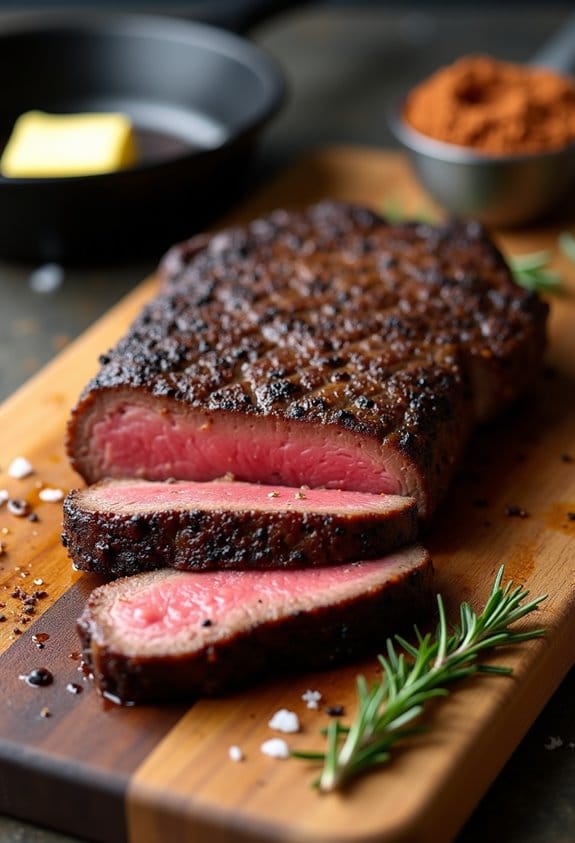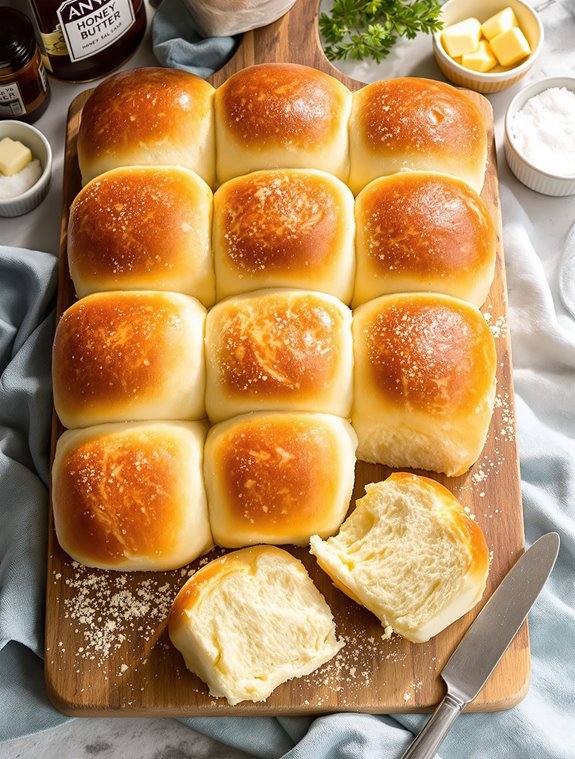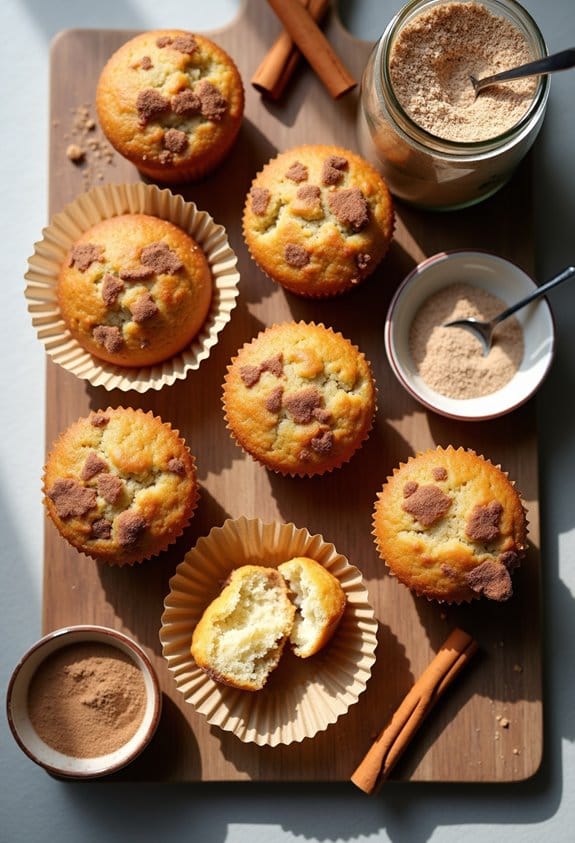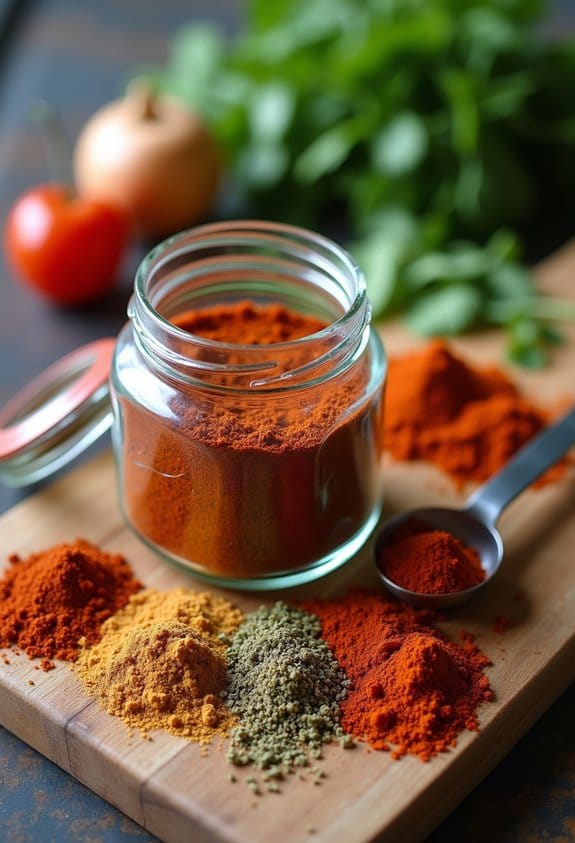Why You’ll Love this Steakhouse Dry Rub
A good steakhouse dry rub changes everything about your home-cooked steak experience.
Trust me, I’ve spent years trying to recreate that perfect restaurant sear and flavor at home. This blend hits all the right notes – savory, slightly spicy, with that professional depth you’re craving.
What makes it special? It’s the balance. The coarse pepper and salt create that beautiful crust, while garlic and paprika add complexity without overwhelming.
And that hint of coriander? My secret weapon for elevating beef.
Mix it up in five minutes, use it tonight, or store it for months.
Why pay steakhouse prices when the magic is just a few spices away?
What Ingredients are in Steakhouse Dry Rub?
The beauty of a great steakhouse dry rub lies in its simplicity. You don’t need fancy ingredients or obscure spices to create that perfect crust and flavor profile we all crave on a perfectly cooked steak. This blend combines basic pantry staples in just the right proportions to elevate your beef from ordinary to restaurant-quality.
And the best part? You probably have most of these ingredients sitting in your spice cabinet right now.
- 1 tablespoon coarse black pepper
- 1 tablespoon kosher salt
- 1 teaspoon garlic powder
- 1 teaspoon paprika (sweet or smoked)
- ½ teaspoon ground coriander
- ¼ teaspoon mustard powder (optional, for a steakhouse kick)
When selecting your ingredients, quality matters. Try to use fresh spices when possible, as they lose potency over time. The coarseness of the pepper is particularly important—too fine and you’ll lose that textural crust, too coarse and it won’t adhere properly.
And don’t be afraid to customize! For a Montreal-style variation, add some dried minced onion and dill seed. If you’re using this blend on burgers, cut the salt in half.
And for vegetable lovers, a touch of brown sugar and extra smoked paprika will help with caramelization. This versatile blend yields about 3 tablespoons, enough to season one or two generous steaks.
How to Make this Steakhouse Dry Rub

Making this classic steakhouse dry rub couldn’t be simpler, and that’s part of its charm. Start by gathering all your spices—1 tablespoon coarse black pepper, 1 tablespoon kosher salt, 1 teaspoon garlic powder, 1 teaspoon paprika (either sweet or smoked, depending on your preference), ½ teaspoon ground coriander, and if you’re feeling adventurous, that optional ¼ teaspoon mustard powder for an authentic steakhouse kick.
Combine everything in a small bowl, taking care to break up any stubborn clumps with your fingers or the back of a spoon. Those little spice lumps can be such troublemakers when you’re aiming for that perfect, even crust.
Once your spice blend is ready, preparation is straightforward. Pat your steaks completely dry with paper towels—trust me, this step makes all the difference for proper adhesion. Moisture is the enemy of a good crust, isn’t it?
Sprinkle about 1 tablespoon of rub per steak, covering all sides generously, and press the spices firmly to help them stick. This is where the magic begins. Let the seasoned steaks rest at room temperature for about 30 minutes before cooking, which allows the flavors to penetrate the meat and the proteins to relax. For even more flavor development, you can dry-brine your steaks by applying the rub and leaving them uncovered in the refrigerator for up to 24 hours—the results are truly transformative.
When you’re ready to cook, simply sear your beautifully seasoned steaks in a screaming hot skillet or on the grill until they reach your desired doneness. I prefer cast iron for that perfect crust, but any good heavy pan will do.
Remember that patience pays off here—resist the urge to constantly flip or move the meat. After cooking, the final essential step is to let your steaks rest for at least 5 minutes before slicing.
This resting period allows the juices to redistribute throughout the meat, ensuring every bite is as succulent as those served at your favorite steakhouse. The result? A perfectly seasoned steak with a flavorful crust that might just have your dinner guests wondering if you’ve been taking secret culinary classes.
Steakhouse Dry Rub Substitutions and Variations
While our classic steakhouse dry rub delivers consistent results, customizing this versatile blend opens up a world of flavor possibilities for your kitchen adventures.
Want a Montreal-style twist? Just toss in some dried minced onion and dill seed—trust me, it’s a game-changer for brisket.
For burger lovers, I always cut the salt in half and use about a tablespoon per pound of ground beef.
And when I’m cooking for my vegetarian friends, I add brown sugar and a pinch of smoked paprika to help vegetables caramelize beautifully.
Who knew one simple rub could transform so many meals?
What to Serve with Steakhouse Dry Rub
When you’ve perfected your steakhouse dry rub, complementary side dishes become your next culinary mission.
I love pairing my rubbed steaks with crispy rosemary potatoes that soak up all those flavorful meat juices. Can’t go wrong with a classic caesar salad, either—that creamy-tangy dressing cuts through the rich meat beautifully.
For something more substantial, try mushrooms sautéed with butter and thyme, or grilled asparagus finished with lemon zest.
Ever tried blue cheese compound butter melting over your steak? Game-changer.
My personal weekend ritual: rubbed ribeye, garlic mashed potatoes, and a robust red wine. Simple pleasures, folks.
Final Thoughts
After perfecting this dry rub recipe over countless weekend cookouts, I’m convinced it’s the simplest way to elevate any cut of beef from grocery-store basic to steakhouse spectacular.
The beauty lies in its versatility—tweak it to your taste, store it in an airtight container for months, or gift it to fellow meat lovers.
I’ve learned that patience matters almost as much as the spices. Those 30 minutes of resting time? Non-negotiable.
They allow the flavors to penetrate and work their magic. Trust me, your patience will be rewarded with that perfect crust that makes your guests think you’ve been hiding professional kitchen credentials.




